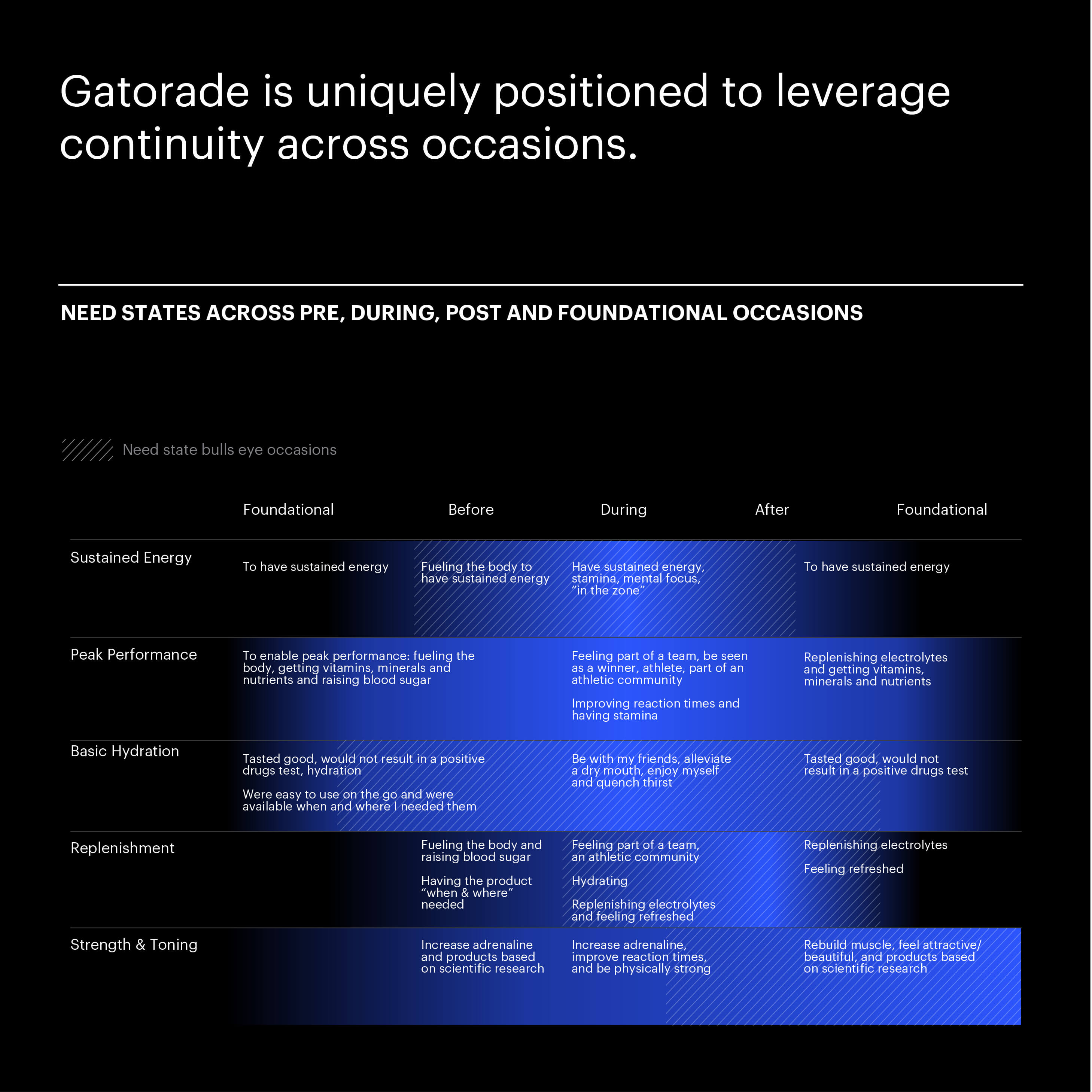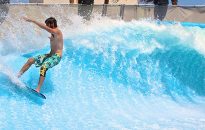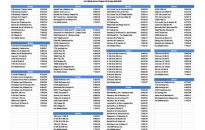Gatorade, owned by PepsiCo, is a prominent brand in the sports drink industry. It exemplifies how a company that knows its audience can drive success and maintain market leadership. As athletes and health enthusiasts increasingly prioritize effective hydration solutions to boost performance and facilitate recovery, recognizing the intricacies of the Gatorade target market becomes crucial […]

Gatorade, owned by PepsiCo, is a prominent brand in the sports drink industry. It exemplifies how a company that knows its audience can drive success and maintain market leadership.
As athletes and health enthusiasts increasingly prioritize effective hydration solutions to boost performance and facilitate recovery, recognizing the intricacies of the Gatorade target market becomes crucial for tailoring marketing strategies and product offerings.
Gatorade isn’t just a sports drink; it’s a brand that’s become a symbol of athletic performance and a trusted ally for everyone from elite athletes to fitness enthusiasts. Gatorade effectively connects with a diverse audience by tailoring its products and marketing to specific consumer needs, making its offerings synonymous with optimal hydration and energy.
This article explores Gatorade’s unique marketing strategies, uncovers the demographics that drive its success, and analyzes the core elements that set the brand apart in a fiercely competitive market.
Who is Gatorade’s Target Audience?
Gatorade’s target market primarily consists of active individuals who engage in sports or physical activities, a demographic that spans various age groups and genders but is mainly focused on the following:
Key characteristics
- Age: Gatorade primarily targets adolescents and young adults aged 13 to 35. This group includes high school athletes, collegiate sports participants, and young health-conscious and physically active professionals. Research indicates that this demographic often involves themselves in competitive and recreational sports, making them ideal consumers for Gatorade’s hydration and energy products.
- Gender: While Gatorade’s products attract male and female consumers, marketing strategies often focus on male athletes, especially in contact sports like football and basketball, where the brand has established a strong association. However, recent marketing initiatives have worked to bridge this gap by promoting female athletes and engaging in campaigns highlighting gender inclusivity.
- Interests and Activities: Gatorade’s target audience’s interests predominantly center sports, fitness, and health. These individuals are typically involved in running, cycling, team sports, and gym workouts. Gatorade’s creation of products tailored to various sports (e.g., endurance formulas for long-distance runners) aligns closely with the needs of this audience, emphasizing its role in hydration and performance enhancement.
- Lifestyle: Gatorade’s target market often prioritizes an active lifestyle, including involvement in youth sports leagues, intramural teams at colleges, marathons, and fitness classes. The growing fitness culture and wellness consciousness trend among millennials and Gen Z supports this engagement.
Gatorade Target Market Segmentation and Marketing

Market segmentation involves dividing a large consumer or business market into smaller, focused groups with specific characteristics. By identifying these segments, companies can customize their marketing efforts and product offerings to meet each group’s unique needs and preferences.
Gatorade exemplifies this strategy by tapping into diverse consumer segments, from elite athletes to casual fitness enthusiasts, enhancing its relevance across the board. The company employs a comprehensive segmentation strategy, including demographic, geographic, behavioral, and psychographic factors.
This multifaceted approach allows the brand to effectively connect with various audiences, ensuring it stays top-of-mind in the competitive sports drink industry. By aligning its products with the lifestyle and preferences of each segment, Gatorade not only meets but anticipates its consumers’ hydration and performance needs.
Gatorade Demographic Segmentation
Demographic segmentation is a marketing strategy that categorizes a target market based on various demographic variables such as age, gender, income, and education. This approach is fundamental for brands like Gatorade, as it allows them to tailor their products, communication strategies, and marketing efforts to meet distinct consumer segments’ specific needs and preferences.
By understanding the demographic composition of its target market, Gatorade can effectively align its products with consumers’ lifestyles, values, and behaviors, thus optimizing its marketing campaigns for better engagement and higher sales.
Age
Age is one of the most critical factors in Gatorade’s demographic segmentation. Gatorade primarily targets athletes and active individuals across different age segments, but its core audience skews towards younger demographics, including teenagers and young adults.
Gatorade’s sales often come from consumers aged 18 to 34, a demographic that is typically more active in sports and fitness activities. This age group is particularly drawn to the rejuvenating qualities of Gatorade’s products, which are marketed as enhancing athletic performance.
Moreover, Gatorade has steadily expanded its reach to younger children through initiatives that promote health and fitness in schools. One notable example is its “Get Fit for School” program, conducted in partnership with organizations like the New England Patriots and local groups in Boston.
By creating partnerships with youth sports leagues and schools, Gatorade has positioned itself as a desirable beverage for younger consumers, often incorporating fun and engaging marketing tactics to attract this demographic.
Gender
When discussing gender, Gatorade has effectively positioned itself to appeal to both male and female consumers. However, its historical roots in competitive male sports give it stronger associations with male athletes. Traditionally, Gatorade’s marketing campaigns featured prominently male professional athletes, reinforcing its association with high-performance sports and drawing in male consumers.
However, recent campaigns have diversified to include female athletes, emphasizing inclusivity in sports marketing. According to a Women’s Sports Foundation report, sports participation among young women has seen a dramatic increase since the early 2000s, creating new marketing opportunities for brands like Gatorade to expand their reach among female athletes.
Using social media and influencer marketing strategies, Gatorade has attracted a growing female audience. One prominent example is the “You Know We Got ‘IT’” campaign, launched in 2024. This campaign emphasizes inclusivity and features female athletes, like flag football quarterback Diana Flores, who became the first female flag football athlete to join Gatorade’s athlete roster. The campaign showcases the impact of women in sports, focusing on the evolving role of female athletes in football and other traditionally male-dominated sports.
Income Levels
Gatorade’s target market spans multiple income levels, but primarily appeals to middle- to upper-income consumers. This segment often has more disposable income for health-oriented products, gym memberships, and sports activities, positioning Gatorade as a premium choice among sports drinks.
Market research indicates that consumers who lead active lifestyles, typically belonging to middle to upper-middle-class brackets, are more likely to purchase performance-oriented products like Gatorade.
In addition, Gatorade has effectively tapped into the fitness and wellness trend, where consumers are willing to spend more on premium products that promise better hydration and recovery.
Consequently, Gatorade’s range of products, from the essential G Series to specialized lines like Gatorade Zero, ensures versatility and reach across various income levels — making it accessible to those seeking performance enhancement and convenient hydration options.
Education
Lastly, education is another demographic factor shaping Gatorade’s target market. Higher educational attainment is often correlated with greater health, nutrition, and fitness awareness. Many college-educated consumers are more inclined to comprehend the importance of hydration in athletic performance and overall health.
Gatorade has thus directed marketing efforts toward universities and colleges, integrating sponsorships and partnerships with athletic programs to reinforce its connection with educated, active individuals.
Higher education levels are often linked with increased awareness and prioritization of health, potentially leading to greater participation in physical activities. By engaging with college athletes and serious fitness enthusiasts through events, campus sponsorships, and educational seminars on proper hydration, Gatorade successfully cultivates a robust customer base among educated consumers who appreciate the science-backed benefits of its products.
Gatorade Geographic Segmentation
Geographic segmentation is a marketing strategy that divides a broad target market into subsets of consumers with everyday needs or preferences based on geographic boundaries.
This segmentation approach is essential for companies like Gatorade, as it allows them to tailor their marketing efforts and product availability to align with consumers’ distinct preferences and demands in different locations.
Geographic segmentation considers various factors, including climate, population density, region, and culture, which can significantly influence consumers’ purchasing behavior and beverage consumption habits.
Gatorade’s Target Customers’ Locations
Gatorade’s target customer base is spread across an extensive geographic footprint, with particular emphasis in regions where sports are prevalent and physical activity is culturally ingrained. Gatorade has established a presence in various global markets, including North America, Latin America, Europe, the Middle East, and Asia-Pacific, leveraging each geographic area’s unique characteristics for targeted marketing strategies.
- North America: In North America, particularly in the United States, Gatorade’s primary market includes urban areas where sports participation is higher, such as cities with a rich sports culture – Los Angeles, New York, Chicago, and Miami. The dense population in these urban centers permits Gatorade to capture a large share of the demographic, including professional and amateur athletes and fitness enthusiasts who prioritize hydration solutions during and after activities.
Gatorade’s penetration of high school and collegiate sports across the United States signifies a targeted approach where the brand works to establish strong brand loyalty among young athletes. This demographic participates vigorously in sports and represents a lifestyle that promotes regular exercise and health-conscious behaviors strongly linked to Gatorade’s mission as a sports drink;
- Latin America: Gatorade has successfully expanded its market, particularly in countries like Brazil and Mexico, where sports such as soccer hold substantial cultural importance. Here, Gatorade aligns its marketing campaigns with local sporting events, leveraging these countries’ emotional connections with their national teams. This strategy promotes brand recognition and encourages consumption among fans who wish to support their teams while engaging in sports or recreational activities;
- Europe: Gatorade faces a more nuanced competitive landscape, as consumers in some countries may favor local beverages. Gatorade addresses this challenge by implementing region-specific marketing tactics. It focuses on promoting its brand at major sports events like UEFA Champions League matches or the Olympics, targeting areas with high sports participation rates, such as the United Kingdom, Germany, and France;
- Asia-Pacific: The Asia-Pacific region presents a growing opportunity as emerging markets like China and India see increasing interest in fitness and health. Gatorade recognizes the varying levels of sports culture and popularity within countries. As such, it adapts its marketing methods — utilizing local languages, endorsing local athletes, and engaging in relevant cultural practices. This adaptive strategy allows Gatorade to resonate with a diverse audience in different geographic settings.
Geographically speaking, Gatorade also tailors its reach to rural areas but might focus on those with strong local sports teams or events, like county fairs or community marathons. Gatorade often sponsors local sports events in these locations to enhance visibility among sports participants and foster brand loyalty through community engagement.
Gatorade Behavioral Segmentation
Behavioral segmentation is a process that categorizes consumers based on their knowledge, attitudes, uses, or responses to a product. This type of market segmentation is precious for brands like Gatorade, as it allows the company to tailor its marketing strategies and product offerings according to consumer habits and preferences.
By understanding how customers behave and what motivates their purchases, Gatorade can better serve its diverse target audience. In the case of Gatorade, the company employs behavioral segmentation by examining several key consumer behaviors. These behaviors can be categorized into various segments: occasion, benefits sought, user status, and usage rate.
- Occasion-Based Segmentation: Gatorade segments its market based on specific occasions when consumers will likely use its products. The primary occasions include athletic events, workouts, and casual hydration needs.
For instance, during high-intensity sports games or competitions, athletes often require rapid rehydration and replenishment of electrolytes. Gatorade capitalizes on this occasion by marketing its products intensively at sporting events, expos, and college campuses, where athletes are more likely to purchase beverages before, during, and after physical activity. Similarly, the brand recognizes casual consumers who might consume Gatorade during leisure activities or hot summer days, and adjusts its promotional strategies to appeal to these occasions.
- Benefits Sought: Different consumers seek different benefits from Gatorade’s products. For athletes, the primary benefits include performance enhancement, quick rehydration, and electrolyte replenishment. Gatorade emphasizes these benefits through marketing campaigns showcasing athletes and featuring testimonials on how the beverage supports superior performance.
Conversely, casual consumers may seek hydration and refreshment without engaging in intense physical activity. By recognizing the varying benefits sought, Gatorade can tailor its product lines — such as Gatorade Zero for those searching for a low-calorie option — thus appealing to a broader audience.
- User Status: Gatorade segments its audience based on user status: non-users, potential users, first-time users, and regular users. For non-users and potential users, Gatorade deploys educational marketing strategies highlighting the product’s benefits and functionalities, aiming to convert them into active customers.
Conversely, Gatorade focuses on cultivating brand loyalty among regular users through loyalty programs, unique promotions, and community engagement initiatives. Engaging with frequent users fosters a sense of community around the brand and ensures consistent sales.
- Usage Rate: The brand also considers the frequency of product usage. Gatorade targets heavy users—those who regularly exercise or participate in competitive sports — with bulk offerings and value packs that encourage repeat purchases. This segmentation approach extends to marketing strategies that leverage sports sponsorships and partnerships with fitness influencers who resonate with high-usage consumers. Conversely, light users may be targeted with smaller, sampler packages to prompt trial and encourage increased consumption.
Marketing Strategies Based on Behavioral Insights
Each of these behavioral segments is driven by unique motivations and consumption styles, prompting Gatorade to tailor its marketing strategies and product offerings accordingly:
- Promotions and Advertising: Gatorade’s marketing campaigns often feature performances from elite athletes using the product, which resonates particularly well with sports-centric customers. Advertising showcases the drinks’ performance-enhancing attributes, primarily aimed at active individuals and athletes who desire a competitive edge. Alternatively, campaigns targeting casual consumers may focus on the refreshment and taste of Gatorade, promoting it as a convenient hydration option through social media and lifestyle-oriented channels;
- Product Line Diversification: Gatorade has developed various product lines catering to different consumer behaviors, such as Gatorade Endurance for long-distance athletes and Gatorlyte, designed for those recovering from severe dehydration. This product differentiation strategy addresses the specific needs stemming from behavioral segments, ensuring that Gatorade remains relevant to a wide range of consumers;
- Community Engagement: Gatorade engages with its community by sponsoring sports teams and events, hosting challenges, and providing health and fitness resources. This engagement fosters brand loyalty and reinforces the brand’s image as a companion in athletic success. These efforts enhance engagement with users, attract first-time consumers, and convert them into regular customers.
Gatorade Psychographic Segmentation
Psychographic segmentation is a marketing strategy that categorizes consumers based on their psychological characteristics, including their values, interests, lifestyles, opinions, and personality traits.
By understanding these elements, companies can tailor their messages to resonate with their target audience on a deeper, more emotional level. In the context of Gatorade, a brand that has firmly positioned itself within the sports drink industry, identifying and exploring psychographic factors are crucial for crafting effective marketing strategies that appeal to various segments of its consumer base.
Core Values of Gatorade’s Audience
Gatorade’s primary audience comprises athletes, fitness enthusiasts, and health-conscious individuals. These consumers share core values that shape their purchase behaviors and brand loyalty.
- Performance Orientation: A significant segment of Gatorade’s target market is competitive athletes prioritizing performance enhancement. For this group, peak physical performance is a vital value, and they seek products that can help them achieve their goals, whether breaking personal records or excelling in team sports. This audience is often dedicated to maximizing their training regimens and, in turn, looks for products that compound their efforts for better results;
- Health Consciousness: Health consciousness is a critical trait among Gatorade consumers, not just athletes. It encompasses individuals who value physical fitness, wellness, and active lifestyles. These consumers are often informed about nutrition and seek products that offer not only hydration, but also essential vitamins and electrolytes to support an active lifestyle;
- Team Spirit and Community Engagement: Many Gatorade consumers embrace a sense of belonging to a community, whether it be through school sports teams, recreational leagues, or broader athletic groups. This sense of camaraderie influences their brand choice; they prefer popular products within their community and often resonate with group loyalty, reinforcing brand choices.
Lifestyle Choices
An active and health-focused approach to life marks the lifestyle choices of Gatorade’s target market.
- Active Lifestyle: Gatorade consumers typically engage in various physical activities, from casual workouts to professional sports. Their lives are interwoven with sports participation, exercise routines, and outdoor activities. This segment is receptive to brands that reflect and reinforce their active lifestyles, making Gatorade appealing as it emphasizes hydration during and after exertion;
- Sustainability Commitment: As societal awareness grows regarding health and environmental issues, Gatorade has also noted the increasing importance of sustainability among its consumers. Many athletes and fitness enthusiasts prefer brands that commit to eco-friendly and sustainable business models;
- Technological Engagement: Gatorade’s target market often gravitates towards technology and innovation within sports. Fitness apps, wearable tech, and performance-tracking tools are popular among these individuals, suggesting their consumer behavior aligns with brands emphasizing innovation. Gatorade’s integration of scientific analyses relating to hydration and performance resonates well with this tech-friendly audience.
Personality Traits
The personality traits of Gatorade’s audience reflect a blend of competitiveness, ambition, and resilience.
- Ambitious and Goal-Oriented: Individuals who gravitate toward Gatorade often have a strong desire to achieve. Their shared trait of ambition drives them to seek products that can enhance their performance and push their limits. They value brands that echo or support their aspirations, which is why Gatorade’s marketing efforts often highlight elite athlete endorsements and success stories;
- Competitive Nature: A competitive disposition defines much of Gatorade’s target demographic. Whether engaged in team sports or individual challenges, the audience thrives on competition and seeks products that help them stand out and win. The essence of Gatorade’s branding as a performance-enhancing beverage aligns seamlessly with this competitive spirit;
- Resilience: Finally, resilience is a vital personality trait within Gatorade’s consumers. Athletes and fitness enthusiasts have often faced setbacks related to competition, injuries, or personal challenges. Gatorade’s messaging of recovery and replenishment aligns perfectly with the identity of consumers who value grit and determination, making its marketing resonance all the more profound.
Influencing Gatorade’s Marketing Message
The psychographic factors discussed are critical in shaping Gatorade’s marketing messages. By recognizing its target market’s values, lifestyle choices, and personality traits, Gatorade can create marketing strategies that are not only about product promotion but also about cultivating an emotional connection.
- Tailored Messaging: Gatorade’s advertising often features high-energy visuals of athletes in action, underscoring the drive for performance and resilience. This aligns with the audience’s aspirations and reinforces the brand as an integral part of their journey toward success;
- Community and Team Engagement Initiatives: Gatorade frequently sponsors and promotes community and school partnerships, promoting teamwork and collective success. Through initiatives that resonate with the audience’s core values, the brand strengthens its image as a supportive ally in their competitive, health-focused lifestyles;
- Science and Innovation Communication: Gatorade’s commitment to scientific research and innovation in hydration and sports performance allows the brand to connect with its audience, which values evidence-based practices. By emphasizing the research and development behind its products, Gatorade positions itself as a trusted partner for ambitious consumers who seek the most effective tools for reaching their goals.
Gatorade Marketing Strategy
Gatorade’s connection with its target audience is built on a dynamic marketing strategy beyond product promotion, centering on empowering athletic performance and fostering loyalty. The company taps into the aspirations and motivations of seasoned athletes and everyday fitness enthusiasts by positioning itself as an indispensable part of an athlete’s routine.
Through inspiring stories of perseverance and performance, Gatorade showcases how it aids physical endurance and recovery, establishing an emotional connection that resonates deeply with anyone who values active living.
One key element of Gatorade’s strategy is its powerful partnerships. From sponsoring significant leagues and teams to endorsing elite athletes, Gatorade has become synonymous with success and peak performance. These high-profile endorsements amplify its presence, reinforcing that Gatorade fuels the best athletes worldwide.
When top players visibly rely on Gatorade, fans are reminded of its effectiveness and drawn to the brand’s association with victory and grit. These partnerships place Gatorade directly in the athletic spotlight, embedding the brand in moments of triumph and teamwork.
Gatorade also excels at creating digital and social media content that speaks directly to its audience. By sharing athletes’ real-life stories and achievements across platforms like Instagram and YouTube, Gatorade doesn’t just market a product — it builds a community.
Engaging posts and user-generated content allow everyday athletes to feel part of a more significant movement, inspiring them to reach their goals with Gatorade by their side. Influencer collaborations amplify this reach, bringing an authentic touch as athletes and fitness personalities share their personal experiences with the brand.
This multifaceted approach creates more than brand recognition; it nurtures a passionate fan base that sees Gatorade as more than a drink. It symbolizes dedication and excellence, embodying the ethos of athletes everywhere who strive to push their limits.
How Gatorade Reaches Its Audience
Gatorade has established itself as a premier sports drink through a sophisticated and multifaceted marketing strategy designed to effectively reach its target audience.
The company recognizes that its primary consumers extend beyond professional athletes to recreational athletes, fitness enthusiasts, and even casual sports fans. To tap into this diverse audience, Gatorade employs a blend of traditional and modern marketing channels, as well as various strategies tailored to resonate with specific segments of its target market.
Social Media Marketing
Social media platforms are crucial for Gatorade to engage with its audience. The brand maintains an active presence on platforms such as Instagram, X (formerly Twitter), Facebook, and TikTok, each tailored to the platform’s and its users’ unique characteristics.
- Engaging Content: Gatorade uses visually stimulating content showcasing athletes in action, often accompanied by motivational messages or educational tips on hydration and performance. For instance, during the NCAA March Madness tournament, the company runs campaigns highlighting college basketball players, leveraging real-time engagement to connect with fans and athletes;
- Short-Form Video: Understanding the popularity of short-form video content, especially on platforms like TikTok, Gatorade has developed a series of quick yet impactful ads highlighting sports performance. These videos depict the science of hydration in action, making it relatable for younger audiences who gravitate towards entertaining and educational content.
Influencer Partnerships
Influencer marketing is another powerful tool in Gatorade’s arsenal. The brand collaborates with influencers, from professional athletes like Serena Williams and Stephen Curry to fitness enthusiasts and lifestyle coaches, to create authentic connections with followers.
- Athlete Endorsements: By partnering with high-profile athletes, Gatorade aligns itself with excellence in sports. These endorsements enhance brand credibility and serve as a source of inspiration for aspiring athletes. Campaigns that feature real stories from athletes about overcoming challenges using Gatorade strengthen emotional connections with the audience;
- Micro-Influencers: Beyond famed athletes, Gatorade also taps into the micro-influencer space, connecting with fitness-focused individuals who have devoted followings in niche markets. These partnerships often result in genuine recommendations that resonate well with local communities, enhancing brand trust.
Email Marketing
Gatorade employs a targeted email marketing strategy to nurture customer relationships and engage its audience.
- Personalized Content: The brand segments its audience into different categories based on interest and engagement levels. For example, emails may be tailored to elite athletes providing advanced hydration tips or casual gym-goers with beginner workout suggestions incorporating Gatorade products;
- Promotional Offers: Gatorade also uses email marketing to promote new flavors or product launches, offering exclusive discounts to subscribers. This tactic keeps the audience informed and encourages the trial of new products, converting casual users into loyal customers.
Event Sponsorship and Experiential Marketing
Gatorade has positioned itself as a staple during major sports events and tournaments, sponsoring high-profile competitions like the NFL, NBA, and NCAA tournaments.
- Active Participation: At events, Gatorade sets up interactive booths providing samples and hydration stations, and experts discuss sports nutrition and hydration strategies. Such hands-on experiences directly engage the audience, allowing a personal interaction with the brand;
- Community Engagement: Gatorade hosts local sporting events and grassroots initiatives promoting health and fitness. Programs aimed at youth sports encourage participation, creating brand affinity from an early age while promoting a healthy lifestyle.
Content Marketing and Education
Gatorade invests heavily in content creation that positions itself not merely as a product brand but as a trusted source of knowledge.
- Hydration Insights: Gatorade provides educational resources through its website and social media. Infographics, articles, and videos focus on the importance of hydration and nutrition in athletic performance, appealing to serious athletes and casual sports enthusiasts;
- Partnerships with Research Institutions: By collaborating with universities and research institutions to study hydration and athletic performance, Gatorade reinforces its role as a leader in sports science. This research is often shared across various channels, showcasing the brand’s commitment to evidence-based products.
Personalization and Customization
Recognizing the importance of personalized marketing, Gatorade has also begun experimenting with product customization options.
- Flavor Customization: One of their notable initiatives is the Gatorade “Endurance” line, where athletes can customize their drinks based on taste preferences and specific athletic needs, reinforcing Gatorade’s commitment to individual athletic performance;
- Tailored Messaging: Gatorade uses data analytics to tailor ads by creating segmented campaigns that address particular groups in digital advertising. For example, advertisements can differ for triathletes compared to team sports players, thus ensuring that messaging is relevant and impactful.
Comparison to Competitors’ Target Audience
Gatorade by PepsiCo has long been a dominant player in the sports drink market, primarily targeting athletes and individuals engaged in vigorous physical activities. To gain deeper insights into its market position, comparing Gatorade’s target audience with two main competitors — Powerade and BodyArmor — will shed light on the overlaps and distinctions in its target demographics and marketing approaches.
Gatorade vs. Powerade
Target Audience Overview
Powerade, owned by The Coca-Cola Company, is often viewed as a direct competitor to Gatorade in the sports drink market. Its target audience includes a broad spectrum of consumers, from recreational athletes and fitness enthusiasts to casual gym-goers and individuals leading active lifestyles. Powerade’s branding emphasizes accessibility and value, making it appealing to a broader audience.
Similarities and Differences
Gatorade’s primary target audience includes serious athletes who train rigorously and compete at high levels. This group often seeks superior performance and recovery solutions, emphasizing electrolytes and hydration. The brand’s intense marketing campaigns frequently feature professional athletes’ endorsements, further solidifying its connection to elite sports.
In contrast, Powerade’s audience is more diverse, encompassing competitive athletes and everyday consumers who partake in sports for leisure or fitness. Powerade positions itself as “the drink of athletes,” appealing to a lower threshold of engagement in sports. It allows it to target occasional exercisers and health-conscious individuals looking for hydration options without intensive performance enhancement.
Key Advantages and Disadvantages
Gatorade’s continuous investment in product development has led to the creation of specialized offerings such as Gatorade Endurance, designed specifically for longer-duration events, and Gatorade Zero, appealing to those wanting lower-calorie options without sacrificing performance.
However, by primarily appealing to severe athletes, Gatorade may overlook the vast market of casual fitness enthusiasts who might prefer Powerade for its more accessible and lower-cost positioning.
Gatorade vs. BodyArmor
Target Audience Overview
BodyArmor, also owned by The Coca-Cola Company through a subsidiary, is a newer contender in the sports drink market. It distinguishes itself by focusing on health-conscious consumers seeking natural ingredients and functional hydration.
Its target audience includes athletes who prioritize health and wellness, as well as everyday consumers who want a hydration solution that complies with their dietary preferences and lifestyle choices, such as being free from artificial flavors and colors.
Similarities and Differences
While Gatorade primarily attracts competitive athletes and fitness enthusiasts, BodyArmor has cultivated an audience that values health, nutrition, and ingredient transparency.
This market segment increasingly includes younger consumers, such as Millennials and Gen Z, who are more discerning about the products they consume. BodyArmor effectively positions itself as a suitable choice for serious athletes and health-conscious individuals who engage in regular physical activity but might not competitively engage in sports.
Both brands compete for the attention of athletic consumers; however, Gatorade leans heavily towards performance-driven marketing, whereas BodyArmor focuses on the health benefits of its products and natural ingredients, resonating with a consumer base emphasizing wellness and sustainability.
Key Advantages and Disadvantages
With decades in the industry, Gatorade enjoys unmatched credibility and trust among serious athletes, who may hesitate to switch to a newer brand like BodyArmor without proven performance metrics.
Also, Gatorade’s extensive distribution networks and visibility in retail and sporting events ensure it remains top-of-mind for consumers, particularly in high-profile athletic contexts where the brand is consistently present.
However, as consumers become more health-conscious, Gatorade’s traditional formulations — often containing sugars and artificial additives — can be viewed less favorably than Bodyarmor’s all-natural product line. This perception may drive health-focused consumers away.
Conclusion
Gatorade has successfully established itself as a leader in the sports beverage industry by strategically targeting a wide-ranging audience that spans professional athletes, fitness enthusiasts, and everyday consumers seeking adequate hydration and energy solutions. Its marketing initiatives highlight the brand’s unwavering commitment to enhancing athletic performance and recovery, resonating with elite sports teams, casual participants, and health-conscious individuals.
Gatorade is well-positioned to remain relevant and competitive in a fast-evolving marketplace by continually innovating its product offerings and aligning with emerging health trends. As consumer preferences shift toward natural ingredients and functional beverages, Gatorade’s agility in responding to these trends will be pivotal in maintaining its market dominance and broadening its appeal to new demographics.














